The Great Fire of London
 If you need help and advice with regard to structural surveys, building surveys, commercial building surveys, schedules of condition, engineers reports, defects reports, including things such as woodwork, dry rot, wet rot, dampness, cracking.
If you need help and advice with regard to structural surveys, building surveys, commercial building surveys, schedules of condition, engineers reports, defects reports, including things such as woodwork, dry rot, wet rot, dampness, cracking.
Please free to phone 0800 298 5424 for a friendly chat.
The Great Fire of London, some facts
The Great Fire of London started on 2nd September 1666 in a bakery in Pudding Lane , near New Fish Street (now known as Fish Street Hill). It is said that over 13,000 properties were burnt down, destroying the homes of 70 to 80,000 inhabitants, which accounted for a very large proportion of London . Information on the fire comes from the London Gazette account (3rd September 1666), published just before it burnt down(!) and the Samuel Pepys (1633-1703) Diaries (1660-1669), etc.
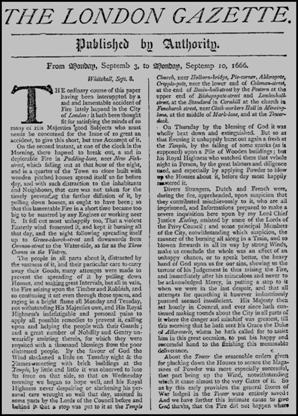

A disaster waiting to happen?
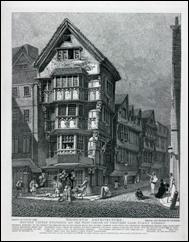 Despite earlier large fires, particularly one in 1632 and warnings by King Charles II in 1661 and again in 1666 about the conditions generally and specifically being ripe for fires, life carried on very much as normal! This meant that timber frame properties were continuing to be built up to six to seven stories high, jetted out with the top floor being much larger than the ground floor, meaning that adjoining properties with the narrow streets almost met at thatched roof level, with only the richest merchants and brokers having stone buildings.
Despite earlier large fires, particularly one in 1632 and warnings by King Charles II in 1661 and again in 1666 about the conditions generally and specifically being ripe for fires, life carried on very much as normal! This meant that timber frame properties were continuing to be built up to six to seven stories high, jetted out with the top floor being much larger than the ground floor, meaning that adjoining properties with the narrow streets almost met at thatched roof level, with only the richest merchants and brokers having stone buildings.
Dispersed within the homes, and it should be remembered that the homes were also places of work and also places where goods were sold, all sorts of businesses took place using fire! Everything from foundries, smithies, glaziers and of course bakers.
The jetting of buildings was a very important factor in the Great Fire of London. This is where the ground floor plan increased on the first floor and all the subsequent floors, stepping out. Again, extra space meant that buildings were almost abutted. This created a chimney or stack effect, which meant if a fire did take hold it would increase in ferocity.
Fires were a frequent event
Back in the 1600's there was no police and no fire brigade as such and everyone relied upon watchmen looking out for fires and the goodwill of everyone helping to put out the fire.
How were fires put out?
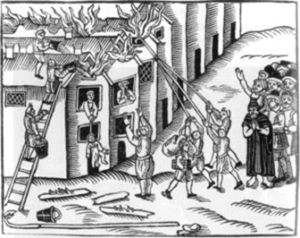
Firehooks being used to demolish a property
Whilst water was used, demolition was also frequently used. With the Great Fire of London in theory there was water available from the Thames and also from Cornhill water tower (interestingly piped there by Elm Pipes) and also the springs in Islington, but the Great Fire of London was said to be too ferocious to be put out by water alone and quick decisive action was required on demolishing buildings, of which it was only the Lord Mayor of London that could give this authority.
As you can imagine, where the buildings were built of timber with thatched roofs, and also gunpowder being readily available, this led to ferocious fires.
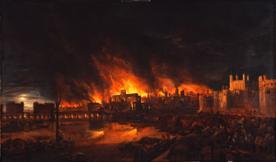
It is said that the Lord Mayor of London , Thomas Bloodworth, refused to allow demolition of buildings, thinking the fire was not ferocious enough. It was only when the Charles II stepped in and said spare no houses that demolition downwind started, although it is also have said to have been far too late for many properties.
Evacuation from the fire was expensive
Evacuation started from London by the rich. Carts for taking of goods away were said to have gone up in price from a few Shillings a day to £40 a day, which is many thousands of pounds in today's money; that's supply and demand in action!
Interestingly, for many years it was been said that only a few died. However, more recently it's thought that more than the eight or so originally said died, as the count didn't include the poor!
Stack Affect
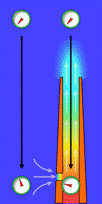 As mentioned, the stack or chimney effect, caused by the jetted buildings, added to the ferocity of the fire, which was said to have become a fire storm; this is where fire then creates its own wind system. Even the great walls of St Paul 's Cathedral didn't stop it and it was said that lead was melting from the roofs. It was said to have melted the chains and locks on the city gates that's a melting point of 1,100 Celsius to 1,650 Celsius or 2,000 Fahrenheit to 3,000 Fahrenheit.
As mentioned, the stack or chimney effect, caused by the jetted buildings, added to the ferocity of the fire, which was said to have become a fire storm; this is where fire then creates its own wind system. Even the great walls of St Paul 's Cathedral didn't stop it and it was said that lead was melting from the roofs. It was said to have melted the chains and locks on the city gates that's a melting point of 1,100 Celsius to 1,650 Celsius or 2,000 Fahrenheit to 3,000 Fahrenheit.
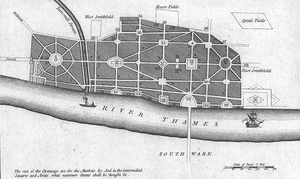
Landlords and Tenants argue!
In the aftermath of the Great Fire of London tenants and landlords argued as to who should pay to rebuild the buildings. A fire court was set up from February 1667 to September 1672, which settled such cases (normally settled on he who could pay).
The Great Fire of London, for the record, is said to have stopped at Pye Corner, Smithfields. For many it's said to be God wreaking on the City of London for the sins of gluttony. Interesting with the happenings of the 1990's and 2000's.
Please see our article on From Fire Marks to Surveyor John Braid Wood'
firemarks.org.uk
london-fire.gov.uk
firemarksonline.co.uk
Independent professional advice on property
If you truly do want an independent expert opinion from a surveyor with regard to structural surveys, building surveys, structural reports, engineers reports, defects report, including things such as cracks, dampness, condensation, foundation problems, etc, dilapidations, home buyers reports or any other property matters please contact 0800 298 5424 for a surveyor to give you a call back.
Independent professional advice on commercial property
If you have a commercial property, be it leasehold or freehold, then you may wish to look at our Dilapidations Website at www.DilapsHelp.com and for Disputes go to our Disputes Help site www.DisputesHelp.com .
Useful articles
We hope you found the article of use and if you have any experiences that you feel should be added to this article that would benefit others, or you feel that some of the information that we have put is wrong then please do not hesitate to contact us (we are only human).
The contents of the website are for general information only and is not intended to be relied upon for specific or general decisions. Appropriate independent professional advice should be paid for before making such a decision.
All rights are reserved the contents of the website are not to be reproduced or transmitted in any form in whole or part without the express written permission of www.1stAssociated.co.uk.
